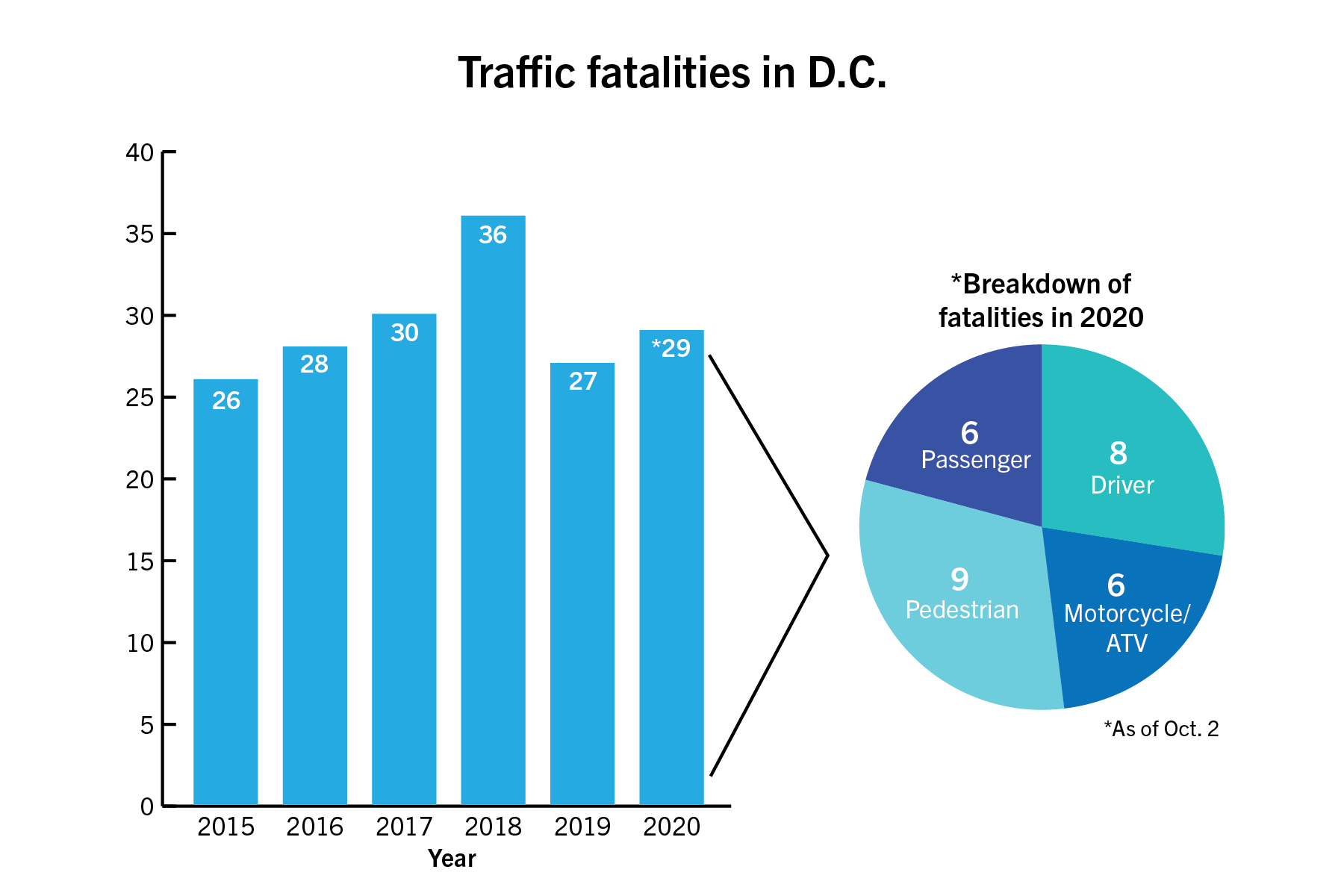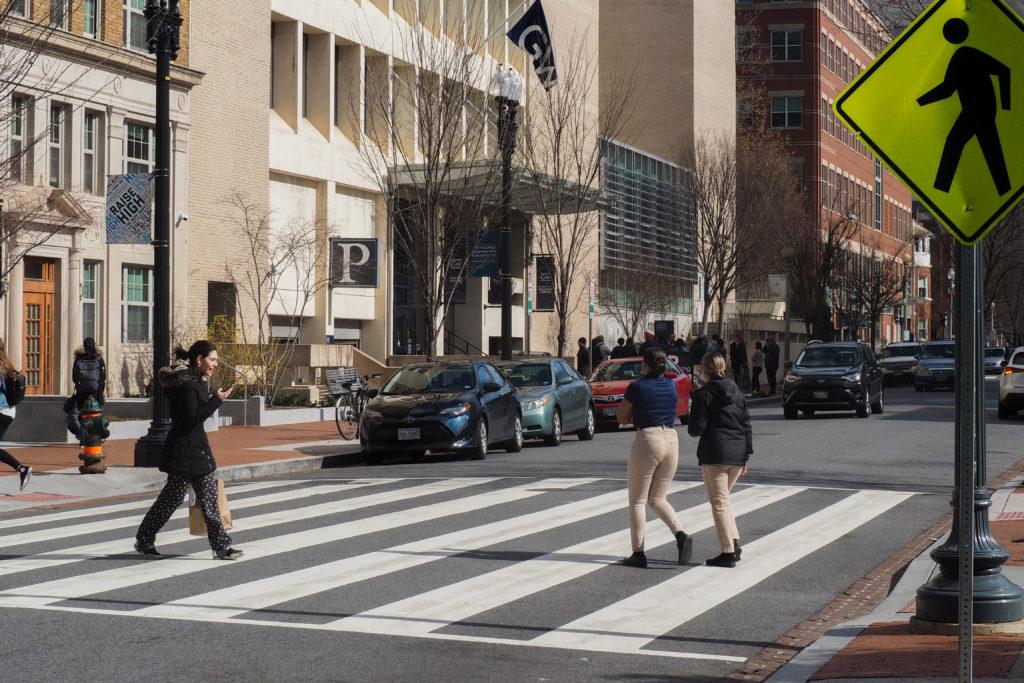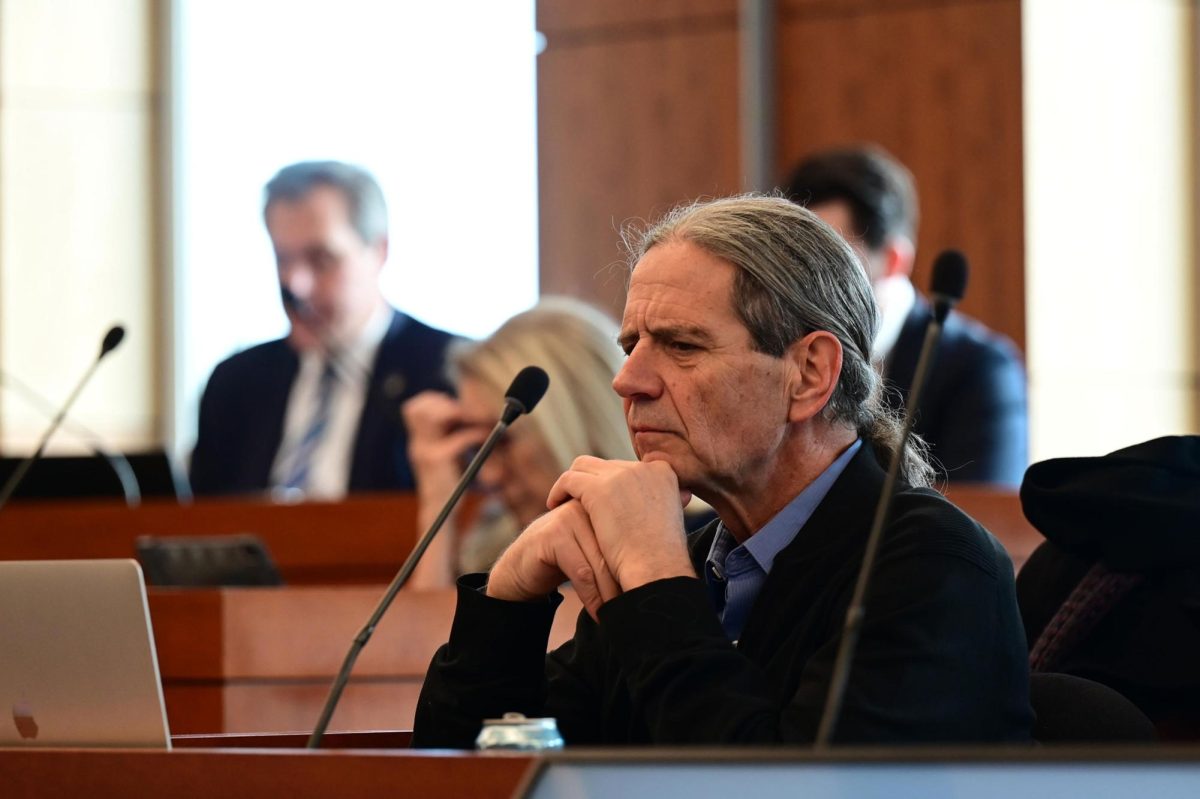The District hopes to eliminate all traffic deaths by 2024, but recent traffic safety trends indicate D.C. is far from its goal.
D.C. has seen 29 people killed in traffic-related deaths so far this year, marking a 53 percent increase from 19 deaths at this time last year, according to the Metropolitan Police Department. City officials said the pandemic has driven the fatality upsurge, as widespread self-isolation has minimized traffic and cleared roads caused more drivers to speed on city streets.
“Across the country, serious and fatal injury traffic crashes have increased due in part to less traffic on the roads,” MPD spokesperson Alaina Gertz said in an email. “This allows for increased speed by many vehicle operators. As speed increases, the seriousness of a traffic crash increases.”
This year’s traffic accidents have claimed the lives of eight drivers, six passengers, nine pedestrians and six people riding a motorcycle or all-terrain vehicle, according to MPD data.

Sidney Lee | Graphics Editor
Gertz said this year’s numbers, which are on track to surpass the city’s highest yearly death count of 36 in 2018, are part of a trend that’s spread across the country during the pandemic. The increase also sets back D.C.’s Vision Zero Initiative – the city’s goal to wipe out all traffic-related deaths and serious injuries by 2024.
She said local drivers are “strongly encouraged” to drive within the posted speed limit and follow all traffic laws. Safe driving during the pandemic has been a priority for District officials during the pandemic – Mayor Muriel Bowser lowered the city’s default speed limit on “local roads” in June from 25 to 20 miles per hour and identified a network of “Slow Streets” that cover 20 miles across the city.
Gertz said pedestrians should contact their district police station if they see speeding or reckless drivers and continue to be aware of sidewalk and traffic signs.
“MPD continues to enforce all traffic laws in the District of Columbia,” she said.
Senior James Harnett, the chair of the Foggy Bottom and West End Advisory Neighborhood Commission, said commuters are more likely to drive their own cars during the pandemic instead of riding public transportation, which many fear could be a leading spreader of the coronavirus.
Harnett said he’s doubtful the city will achieve its main goal of the Vision Zero Initiative, to eliminate all traffic deaths by 2024, so long as city officials do not invest more money in traffic safety measures. He said “more people are going to die” if the D.C. government doesn’t invest more money in the Vision Zero bill passed last month.
The D.C. Council voted to implement a package of traffic safety measures, like requiring sidewalks to be installed on both sides of all roads and removing “right on red” turns from stops near pedestrian-heavy areas.
“It’s not going to happen,” Harnett said. “It’s a fairy tale to assume that we’re on track to end traffic fatalities and serious injuries by 2024. Anyone who tells you that is lying. It’s simply not true.”
Harnett and other commissioners on the Foggy Bottom and West End ANC have funded two neighborhood studies in recent years – one on Washington Circle and one on H Street – to strengthen traffic safety near campus.
The ANC’s Washington Circle study ushered city officials to install a traffic island at the circle’s intersection with 23rd Street last year where cars had previously failed to stop for pedestrians crossing the street.
The ANC launched its $5,000 H Street study last June in hopes of facilitating Bowser’s Vision Zero Initiative and identifying changes that could enhance the safety of the street pedestrians typically dominate. The study found drivers often roll through the H Street crossing area, and many pedestrians cross the street without using the crosswalk.
The ANC has also approved plans over the past two years for the District Department of Transportation to install bike lanes on Pennsylvania Avenue, 20th and 21st streets and G Street. Bike lane construction on 20th, 21st and G streets will begin by the end of the fall, and commissioners voted last month to request officials launch the Pennsylvania Avenue project “immediately.”
DDOT officials did not return a request for comment.
Harnett said city officials need to offer free Metro access – which students have demanded for years – and circulate more Metrobuses in hopes of removing drivers from the cars that have elevated traffic fatalities to new levels in recent years.
“Our opportunity in this moment is to recognize we need to redesign our streets to prioritize the folks that aren’t in two-ton death machines and that we need to protect the folks that are dying at the hands of drivers,” he said.
Traffic safety expert Brian Pfeifer – a former research engineer at the University of Nebraska and the president and CEO of Quality Forensic Engineering, an engineering and accident reconstruction firm – said he’s seen traffic accidents become “more severe” during the pandemic as empty roadways have encouraged speeding.
He said eliminating traffic deaths by 2024 is “very lofty,” but it sets the right motive to cut fatalities as much as possible.
“I’ve worked in roadside and roadway safety for 30 years, and absolutely eliminating accidents and deaths is virtually impossible,” Pfeifer said. “But all we can do is work to minimize those numbers.”
Pfeifer said D.C. officials should condense police presence along city streets to let drivers know they’ll be punished for speeding and risking more deaths during the pandemic. He said stronger law enforcement would yield “immediate results,” but legislative action – like roadway redesign or modifying road signs – would help address the city’s long-term goal.
“With changing designs in the roadway, there’s a longer term and where there’s more cost involved with regards to making those changes, but generally speaking, those are the types of things that can make the roadway safer for all users,” he said.








